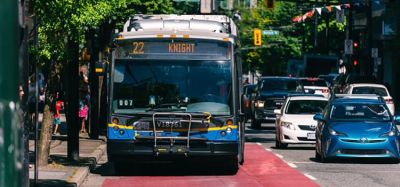Finland in focus: where mobility meets sustainability
- Like
- Digg
- Del
- Tumblr
- VKontakte
- Buffer
- Love This
- Odnoklassniki
- Meneame
- Blogger
- Amazon
- Yahoo Mail
- Gmail
- AOL
- Newsvine
- HackerNews
- Evernote
- MySpace
- Mail.ru
- Viadeo
- Line
- Comments
- Yummly
- SMS
- Viber
- Telegram
- Subscribe
- Skype
- Facebook Messenger
- Kakao
- LiveJournal
- Yammer
- Edgar
- Fintel
- Mix
- Instapaper
- Copy Link
Posted: 13 January 2020 | Laura Eiro - ITS Finland | No comments yet
Finland is considered a leader in the implementation of MaaS and is also at the forefront of sustainable mobility efforts. At 2019’s Intelligent Transport Conference, Editor Luke Antoniou spoke to Laura Eiro, Program Director at ITS Finland, about a new concept that is coming to the foreground across the world’s transport networks – Mobility-as-a-Sustainable-Service.
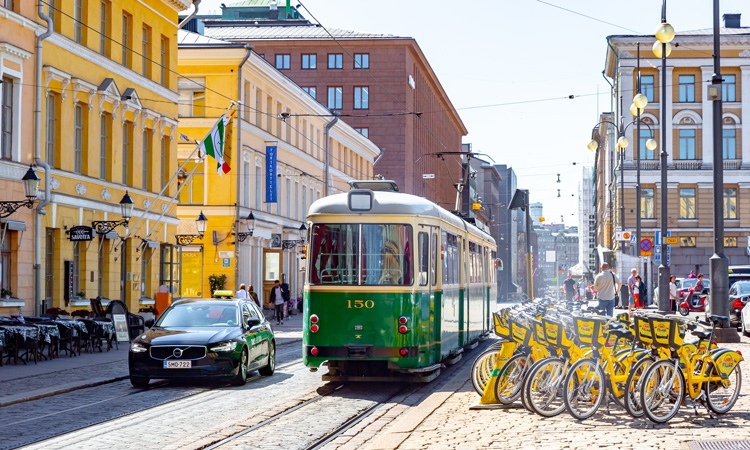

What does the mobility market look like across Finland at the moment, and what’s top of the agenda?
For Mobility-as-a-Service (MaaS), it needs to be acknowledged that a systemic change requires some time, so we are still in the phase of implementing the Act on Transport Services. The legislation has been in place for two years. Naturally, it entered into force gradually, and now we are at the point of seeing what needs to be done to change habits in different organisations, and how to really push forward the take-up of MaaS.
There are still companies or actors who have not opened up their data and APIs. This is an issue that the Transport and Communications Agency is addressing, and we are in discussion with the biggest cities in Finland about finding the framework to promote MaaS, in addition to the law.
What we need to achieve is even closer collaboration between the public and private sectors, as well as greater research
It would be useful to have a framework that can be applied to as many cases as possible, thus promoting easier take-up. We hope that there will also be new MaaS services launched in other cities, and that there will be competing MaaS operators in Helsinki. This has been our target from the very beginning – that there should be many different operators.
In regard to policy, we now have a new government that is concentrating particularly on climate change. It recently established a working group to look into the measures required to, firstly, halve domestic transport emissions from 2005 to 2030, and secondly, achieve totally carbon-neutral transport by 2045 at the latest. Naturally, there are many different types of measures that need to be considered, and of course digitalisation is one part of this.
We are also looking at taxation under the Minister of Finance and looking at the possibilities for the emission trading scheme in transport, and whether that is something that should be applied.
What we need to achieve is even closer collaboration between the public and private sectors, as well as greater research. We need to establish the criteria on which we are going to measure the success of MaaS and build up mechanisms where we have enough data to implement it in transport planning. It will be a reciprocal process.
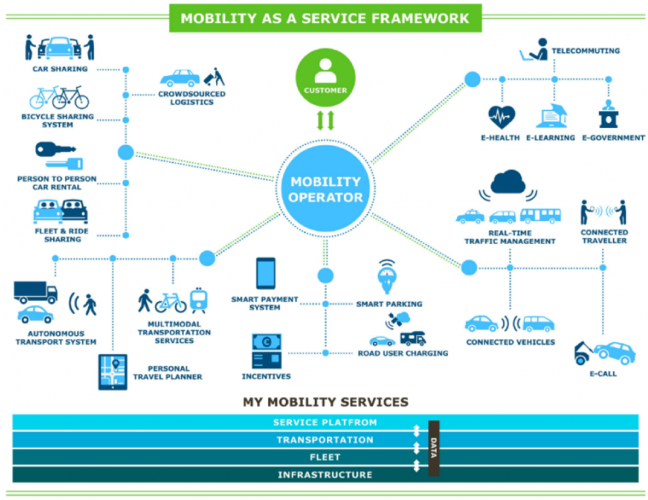

MaaS framework – Credit: Ministry of Transport and Communications of Finland
What do you think the criteria are for quantifying the success of MaaS?
I think we need to have an overall picture of the whole transport system, the share of different transport modes, and overall emissions from the transport system. And then you would have to calculate back and discover what the proportion of MaaS in achieving all of this is. Certainly not an easy task!
Ultimately, I think the key is the overall effectiveness and sustainability of the transport system, and this cannot be measured on the users of the service alone. One example is how public transit is growing; passenger numbers, the increase in people walking and cycling – and the effect of the overall mobility package that has encouraged them to do that. This is something we’re exploring at the moment.
How crucial is sustainability when implementing MaaS?
Our focus is on sustainable transport, and the potential results of providing consumers with attractive sustainable travel options. This has to be the primary focus, as ultimately our planet will not last if we don’t change our habits. MaaS needs to be recognised on a much greater public level – in Helsinki, for example, there are still many people that are not familiar with MaaS services We all have a responsibility to increase awareness and show that there really are options already available.
In Finland, MaaS has always been about sustainable service, of which public transport is the backbone. The idea is to have better connections, and an integrated system between public transit and other services, enabling a service level that can effectively respond to passenger needs.
This concept has actually been, in a way, a confusing discussion internationally, as you find that people are talking about different kinds of concepts as MaaS. It is difficult to reach consensus when the parties involved have different starting points. MaaS as a sustainable concept needs public steering, city-level steering and regulation, as well as sustainable business models.
The Intelligent Transport Conference will be returning in 2020. Click here to register your interest and receive the latest information!
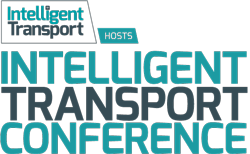

Do you think this is a concept in which Finland will lead the way?
I certainly hope so and, in essence, we have to due to the very close collaborations we have between the actors, the public and private sectors and research. I’m hopeful that we will be able to build that system in the context of the working group on fossil-free transport under the Ministry of Transport and Communications.
We have the National Transport Sector Growth programme, which I’m leading. It’s a programme under the Minister of Employment and Economy, where we have four different ministries and the six biggest cities and research organisations looking at how we can simultaneously turn to a sustainable transport system while generating business opportunities. Here we are looking at how cities can act as a platform, how we can scale up trials and experiments and have more effective experiments. There are many small ones ongoing, but we need to be faster in scaling up. So, we are also looking at public procurement. During his keynote, Michael Hurwitz from TfL also made the point that public procurement is a good and powerful tool to drive change if it’s used wisely.
Alongside these efforts, Business Finland – the national funding organisation – is allocating money for smart mobility services to be developed. We are going through all the areas that should be targeted in the same line to make the change, but, admittedly, it’s a lot of work. That said, I’m pleased with the comprehensive view that we have been able to build in Finland, because it’s not only legislation that will change – we’ll change habits too.
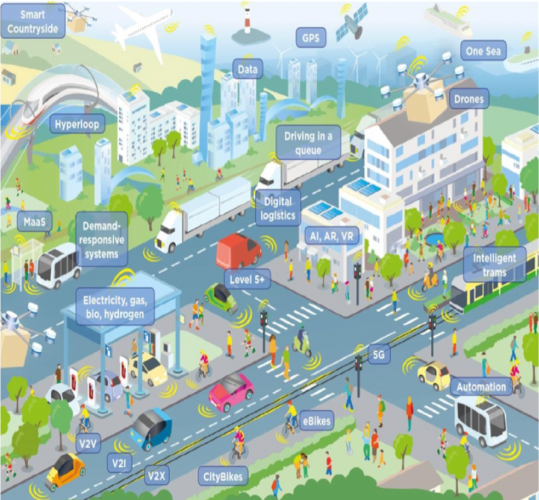

Transport system – Credit: National Growth Programme for the Transport Sector
Do you see other cities and countries around you working with the same aspirations?
I think that the discussion is similar everywhere – how to really build a strong collaboration between public and private sectors, how to define the roles for each, and then develop business models. We believe that there are going to be several different business models for mobility services, so it’s about putting this change into practice.
Of course, every city has their strengths, and we need to share more information, data and knowledge for the benefit of us all. MaaS Alliance, for instance, is a good example of bringing different actors together. Without collaboration no one will be able to make progress quickly. In the Nordics we are working together to build a unified MaaS market and the Nordic Mobility Innovation Platform project funded by Nordic Innovation is facilitating the creation of a standardised mobility market.
Do you think public perceptions in terms of sustainable travel and climate change really are starting to change?
I believe so. For arguably the first time, we are starting to see people make decisions that are based on the impact they might have on the future. Previously, many people would say that they wanted to lead a sustainable lifestyle but did not take any action to make it possible.
This is exactly why we need collaboration and co-creation within the public sector, to set targets and to give cities and public transit a say, a platform even, as a backbone to develop services
With data, you really can make your carbon footprint visible. In the city of Lahti, we have a really interesting experiment taking place. They are demonstrating a personal emission trading scheme for mobility. This project is the first of its kind in the world. It began in September 2019, on a voluntary basis. The people who take part are given a personal carbon project, enabling them to see what their choices will ultimately lead to. If they achieve below their carbon budget, they are rewarded. This project engages people with the initiative and gives a sense of accountability for the choices they make.
It is this engagement with the public that, historically, hasn’t been good enough. This is exactly why we need collaboration and co-creation within the public sector, to set targets and to give cities and public transit a say, a platform even, as a backbone to develop services. Then it’s up to the companies to find the real resources which will help make the transition. Needless to say, the pricing of transport also needs to be discussed as part of this.
Over the next 12 months, what do believe the major trends for the intelligent transport sector will be?
I think the integration of public transit and other services will continue to be key; whether it’s MaaS or integrating services and other innovations into the system, and how to build a system where cities can adapt to new innovations.
Drones have also been quite high on the agenda, with many trials and much experimentation taking place; logistics drones for instance. If you can find another way of taking that traffic off the streets, you have the potential to take away quite a significant portion of the problem. They have the potential to equally benefit cities and rural areas, with the potential to transport key items such as medication. I’m sure drones will continue to at the forefront of innovation.
Biography
Laura Eiro has over 15 years’ experience in the transport policy sector in Finland and she is passionate about promoting sustainable and user-friendly mobility. Currently, Eiro works as a Program Director for the National Growth Program for the Transport Sector at ITS Finland. She has previously worked in the Ministry of Transport and Communications of Finland in various positions.
Related topics
Mobility Services, Multimodality, Sustainable Urban Transport
Related cities
Finland




